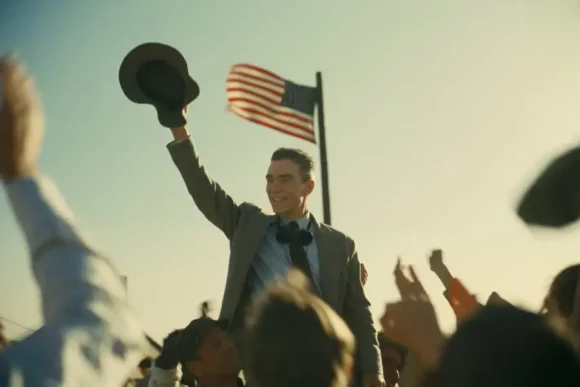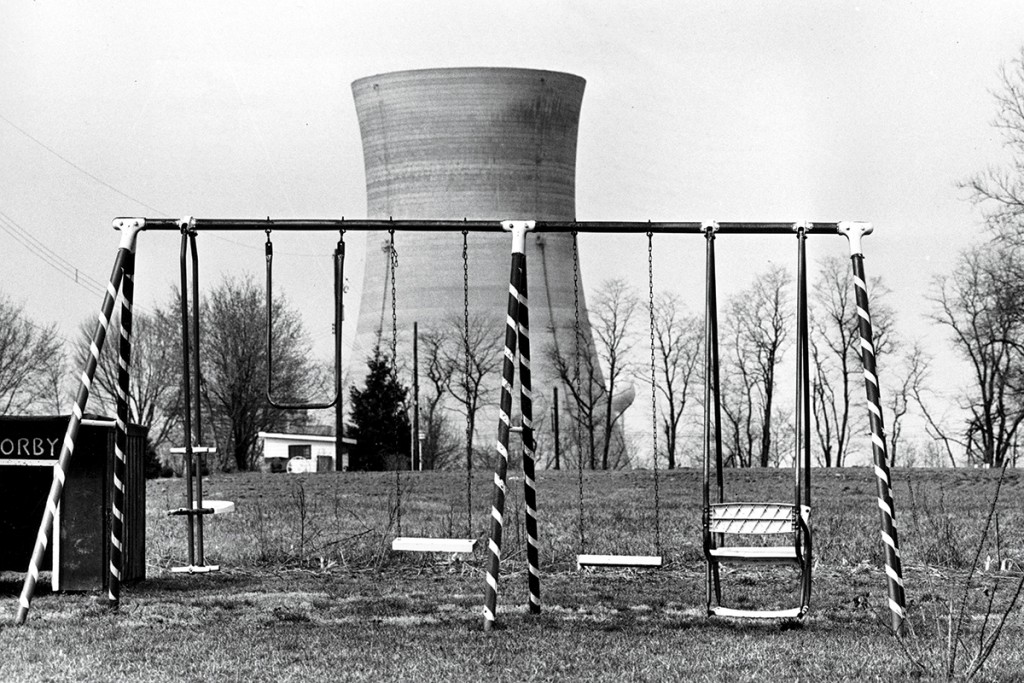Watching Christopher Nolan’s Oppenheimer for New Scientist, 19 July 2023
At 05.29 and 45 seconds on 16 July 1945, an electrical circuit clicks shut and thirty-two detonators fire, driving a uranium plug into a core of plutonium. The plutonium fissions, each atom splitting into lighter elements, a blast of gamma radiation and two or three more neutrons, which hurtle forth, triggering further reactions. A new world order is born: one in which the human species has the capacity to all-but wipe itself from the face of the planet; a world in which the terror of annihilation helps avert global conflict, unevenly, at great cost, and by no means necessarily for ever.
J Robert Oppenheimer directed atomic bomb development at Los Alamos in New Mexico, and then spent many subsequent years arguing for international arms control, and against US development of the even more powerful fusion bomb. Not only did he midwife this new Cold War world into being; he gave us the vocabulary with which to talk about it, agonise over it, and fear it.
It is possible to miss the point of Christopher Nolan’s superb biopic of Oppenheimer. One and a half hours of screen time follow the successful Trinity test of an atomic device. If all that interests you is how Nolan, a filmmaker famously wedded to analogue production and real (70mm IMAX) film, conveys the scale of an atomic explosion, you’re in for a long haul.
Oppenheimer is about the war in its hero’s head. It reflects the world in which Oppenheimer actually operated. It’s a film set in lecture rooms and laboratories, in living rooms and kitchens, shacks and bunkers. (The horror of Hiroshima is conveyed quite simply: Oppenheimer, sat in front of footage of the aftermath, cannot stand to watch, and looks away.)
Following America’s use of two atomic bombs on Japan at the end of the second world war, walls shake, exposures wobble, continuity stutters and different film stocks are muddled together to convey Oppenheimer’s increasingly nightmarish experience of the new reality. Were Nolan’s story (drawn from Kai Bird and Martin Sherwin’s biography American Prometheus) not so grippingly told, the final film, with its invarying pace, portentous, minimalist musical score and abiding humourlessness would, I suspect, prove unwatchable: like 2020’s Tenet, a film easier to read than to watch: a three-hour-long promo video.
What transforms Oppenheimer — and makes it, for my money at any rate, Nolan’s best film since 2006’s The Prestige — is the sheer crafti evident in the script.
The film orbits around two official hearings, both of which took place in the early fifties: Oppenheimer’s appeal against the revocation of his security clearance with the Atomic Energy Commission; and former AEC commissioner Lewis Strauss’s cabinet confirmation hearing as he tilted for reappointment as US Commerce Secretary. Those who know Strausss’s fraught attitudes towards Oppenheimer will relish Robert Downey Jr’s screen-chewing perfomance as the multifaceted Strauss. Those coming to the material fresh have a cracking twist in store, as the pair’s relationship comes to vivid life in the final act of the film.
Fragments of Oppenheimer’s odyssey — from theoretical astrophysicist to father of the atomic bomb — orbit these two centres of gravity. The narrative surface that results is as complex as anything Nolan has achieved before, but less confusing. Oppenheimer covers a staggering amount of intellectual historical and biographical ground, with nary a trace of gallumphing exposition. The script finds room to give Russian physicists given their due, and conveys very sensitively the internationalist sentiment that dominated research at Los Alamos.
Of course, the physicists and engineers at Los Alamos could think what they liked. There was a war on, and a Cold War to follow. Oppenheimer’s largely fruitless tilts at geopolitical realities after the war was over became emblematic of the plight of the conscience-stricken government scientist. His damaging run-ins with officialdom during the anti-communist scares of the 1950s only confirmed his status as a modern Prometheus, punished for handing atomic fire to humanity.
Strauss had little time for the idea of Oppenheimer-the-tragic-overreacher, and Nolan, funnily enough, seems to agree. At any rate, he finds no use for Oppenheimer’s own self-dramatising. (Oppenheimer, quoting the Bhagavad-Gita, used to notoriously bang on about becoming Death, Destroyer of Worlds; this dark flourish is got rid of early on.) Nolan is much more interested in Oppenheimer’s impossible bind: an intelligent man, by no means naive or “unpolitical”, whose background in academia and theory un-fits him for the world he helps create. Emily Blunt’s performance as Kitty, Oppenheimer’s increasingly embittered and partisan wife, is crucial, if almost wordless. Other big names flourish in supporting roles that allow them unusual freedom. Matt Damon is positively gruff as Leslie Groves, the general in charge of the Los Alamos project; Dane DeHaan relishes a gratingly unsympathetic portrait of Kenneth Nichols, director of US Army R&D; Bennie Safdie makes even the peaceniks among us fall in love with Edward Teller, hawkish father of the fusion bomb, a straight-shooting adversary Oppenheimer can’t help but shake by the hand, to Kitty’s lip-curling disgust.
Even before he starts acting, Cillian Murphy’s resting demeanour drips a sort of divine cluelessness that makes him a shoo-in for the role of Robert Oppenheimer. He goes on to deliver a shuddering performance that, more than any finely wrought dialogue, conveys the impossible moral bind of scientists recruited into government service.
To know the world is to change it. On 16 July 1945, knowledge and deed were separated by the press of a single red button. Oppenheimer takes three hours to explain why this moment matters, and there’s not a second of screentime wasted. It’s a rich, strange, compelling film. A tragedy, yes — and a triumph.


